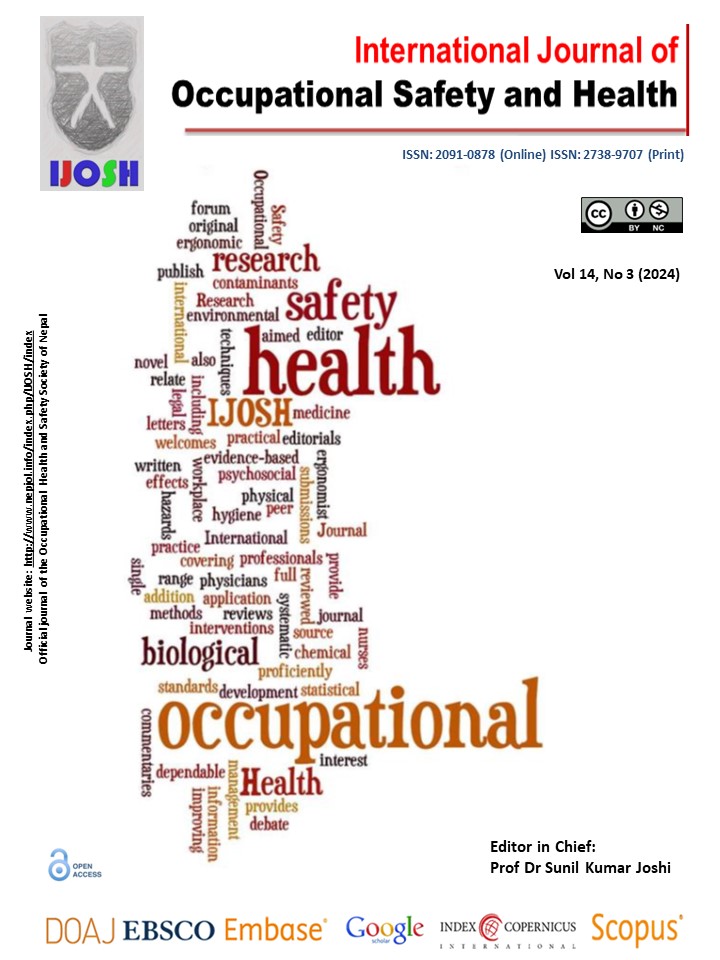Estimation of Intrinsic And Extrinsic Hand Muscle Performance in Chronic Smartphone Users
DOI:
https://doi.org/10.3126/ijosh.v14i3.50212Keywords:
Chronic smartphone users, Hand function, Hand grip strengthAbstract
Introduction: In recent years, smartphone use has significantly expanded, and the majority of daily tasks are now completed on them. Therefore, extended use may result in improper posture, which may result in several musculoskeletal pains. It's crucial to assess the relationship between smartphone addiction and musculoskeletal pain. The length-tension relationship between the intrinsic and extrinsic hand muscles might alter due to the repetitive movement of the hand muscles. The purpose of the study is to determine the length tension relationship of the intrinsic and extrinsic hand muscles in chronic smartphone users.
Methods: The cross-sectional design of this study allowed for the selection of 80 participants based on both inclusion and exclusion criteria. The information that was gathered included demographic information, smartphone usage patterns, hand grip strength, and length-tension relationships. The subjects' pain levels were also measured using the smart phone addiction scale. The male and female scores on the smartphone addiction scale were >31 and >33, respectively.
Results: The findings of this study among 80 chronic smartphone users demonstrated that 50 (62.5%) of them fell in the 25–30 age bracket, whereas 30 (12.5%) were in the 30-35 range. Amongst them, 69 (86.25%) were right-handed, while 11 (13.75%) were left-handed. Upper Limb Tension Test, Visual Analogue Scale, and Smartphone Addiction Scale mean + SD readings were 37.77 + 9.5, 5.66 + 1.47, and 0.76 + 0.42, respectively.
Conclusion: According to the outcomes of this research, we established a link between smartphone use and the length-tension of the hand muscles. We can therefore draw the conclusion that among subjects who used cell phones frequently, there was a change in the length-tension relation of the hand muscles, which resulted in a reduction in hand grip strength.
Downloads
Downloads
Published
How to Cite
Issue
Section
License
Copyright (c) 2024 The Author(s)

This work is licensed under a Creative Commons Attribution-NonCommercial 4.0 International License.
This license enables reusers to distribute, remix, adapt, and build upon the material in any medium or format for noncommercial purposes only, and only so long as attribution is given to the creator.





